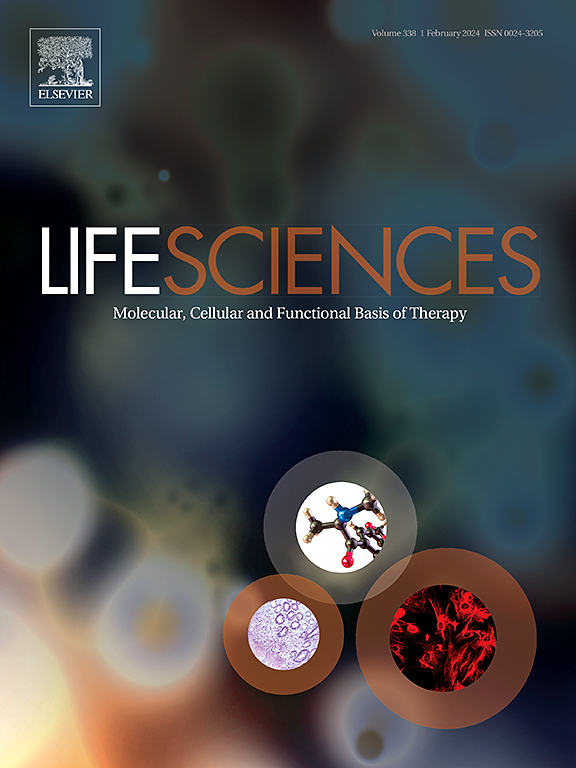Human urine-derived stem cells from different donor sources ameliorate diabetic nephropathy in mice by activating autophagy and restoring mitochondrial function of podocyte
IF 5.2
2区 医学
Q1 MEDICINE, RESEARCH & EXPERIMENTAL
引用次数: 0
Abstract
Background
Human urine-derived stem cells (hUSCs) are a novel type of mesenchymal stem cells (MSCs) originating from the kidney, with promising potential for personalized therapies. However, it remains unclear whether hUSCs can be successfully isolated from individuals of different ages and disease states-including healthy young individuals, healthy elderly individuals, and patients with diabetic nephropathy (DN), as well as their therapeutic potential and mechanism in DN.
Methods
hUSCs were isolated from healthy young men (hUSC-HY), healthy elderly men (hUSC-HE), and male DN patients (hUSC-DN), and their biological characteristics were systematically evaluated. The therapeutic effects of early-passage (P3-P5) hUSC-HY, hUSC-HE, and hUSC-DN were assessed in DN mouse models. In vitro, the effects of conditioned medium (CM) derived from each hUSC group on apoptosis in high glucose (HG)-injured mouse podocytes (MPC5) were assessed. To explore the underlying mechanisms, autophagy activation and mitochondrial function were further analyzed in HG-injured MPC5 cells treated with or without hUSC-CM.
Results
Early-passage (P0-P5) hUSC-HY, hUSC-HE, and hUSC-DN exhibited comparable biological characteristics. However, after passage 5, hUSC-HE and hUSC-DN progressively developed senescent phenotypes. Early-passage hUSC-HY, hUSC-HE, and hUSC-DN effectively improved renal function and ameliorated tissue damage in DN mice, primarily by inhibiting HG-induced podocyte apoptosis. In vitro, CM derived from all three hUSCs types (P3–P5) significantly attenuated HG-induced apoptosis in podocytes (MPC5 cells) by the activation of autophagy through suppression of the PI3K/AKT/mTOR and ERK/mTOR signaling pathways. Additionally, hUSCs were shown to deliver functional mitochondria to injured MPC5 cells, thereby restoring mitochondrial function and further contributing to the inhibition of podocyte apoptosis.

不同供体来源的人尿源干细胞通过激活自噬和恢复足细胞线粒体功能改善小鼠糖尿病肾病
人尿源性干细胞(hUSCs)是一种源自肾脏的新型间充质干细胞(MSCs),具有个性化治疗的潜力。然而,hUSCs能否从不同年龄和疾病状态的个体(包括健康的年轻人、健康的老年人和糖尿病肾病(DN)患者)中成功分离,以及它们在DN中的治疗潜力和机制尚不清楚。方法从健康青年男性(hUSC-HY)、健康老年男性(hUSC-HE)和男性DN患者(hUSC-DN)中分离uscs,并对其生物学特性进行系统评价。在DN小鼠模型中评估早期传代(P3-P5) hUSC-HY、hUSC-HE和hUSC-DN的治疗作用。在体外,我们评估了来自每个hUSC组的条件培养基(CM)对高糖(HG)损伤小鼠足细胞(MPC5)凋亡的影响。为了探索其潜在的机制,我们进一步分析了用或不用hUSC-CM处理的hg损伤的MPC5细胞的自噬激活和线粒体功能。结果早期传代(P0-P5) hUSC-HY、hUSC-HE和hUSC-DN具有相似的生物学特性。然而,在第5代后,hUSC-HE和hUSC-DN逐渐出现衰老表型。早期传代的hUSC-HY、hUSC-HE和hUSC-DN主要通过抑制hg诱导的足细胞凋亡,有效改善DN小鼠的肾功能和改善组织损伤。在体外,来自三种hUSCs类型(P3-P5)的CM通过抑制PI3K/AKT/mTOR和ERK/mTOR信号通路激活自噬,显著减弱hg诱导的足细胞(MPC5细胞)凋亡。此外,研究显示,hUSCs可以将功能性线粒体传递给受损的MPC5细胞,从而恢复线粒体功能,并进一步抑制足细胞凋亡。
本文章由计算机程序翻译,如有差异,请以英文原文为准。
求助全文
约1分钟内获得全文
求助全文
来源期刊

Life sciences
医学-药学
CiteScore
12.20
自引率
1.60%
发文量
841
审稿时长
6 months
期刊介绍:
Life Sciences is an international journal publishing articles that emphasize the molecular, cellular, and functional basis of therapy. The journal emphasizes the understanding of mechanism that is relevant to all aspects of human disease and translation to patients. All articles are rigorously reviewed.
The Journal favors publication of full-length papers where modern scientific technologies are used to explain molecular, cellular and physiological mechanisms. Articles that merely report observations are rarely accepted. Recommendations from the Declaration of Helsinki or NIH guidelines for care and use of laboratory animals must be adhered to. Articles should be written at a level accessible to readers who are non-specialists in the topic of the article themselves, but who are interested in the research. The Journal welcomes reviews on topics of wide interest to investigators in the life sciences. We particularly encourage submission of brief, focused reviews containing high-quality artwork and require the use of mechanistic summary diagrams.
 求助内容:
求助内容: 应助结果提醒方式:
应助结果提醒方式:


